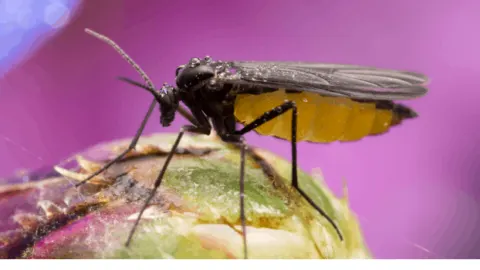You are reading this article because you are interested in how to get rid of gnats in houseplants. In this article, I share my best tips, from identifying fungus gnats to why they infest your plants to the best remedies.
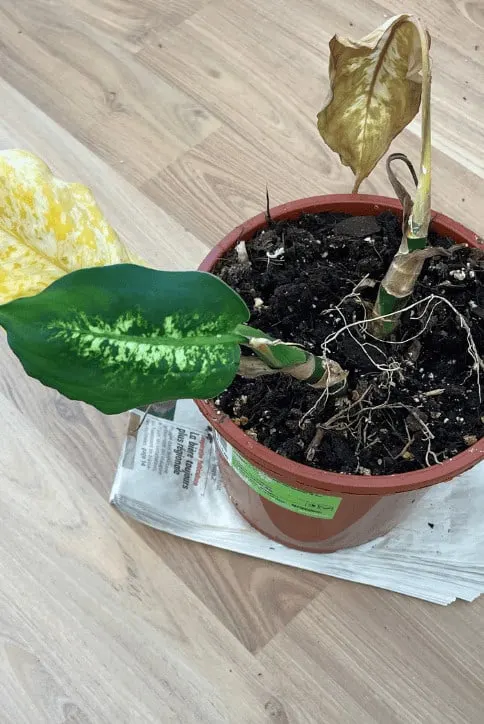
How To Get Rid of Gnats in Houseplants
The best thing you can do to avoid gnats in houseplants is to keep the soil drier.
If your soil stays wet for too long, fungus gnats will inhabit the soil of your indoor plants and lay eggs. Gnats infestations spell trouble. Because not only are these little black insects on and around your houseplants. They have wings and can fly.
Fungus gnats are more common on indoor plants because it is easy to overwater them. If you have insufficient drainage or water too much, it takes a while for the soil to dry. Outside, the soil dries much quicker from the sun and wind (air circulation).
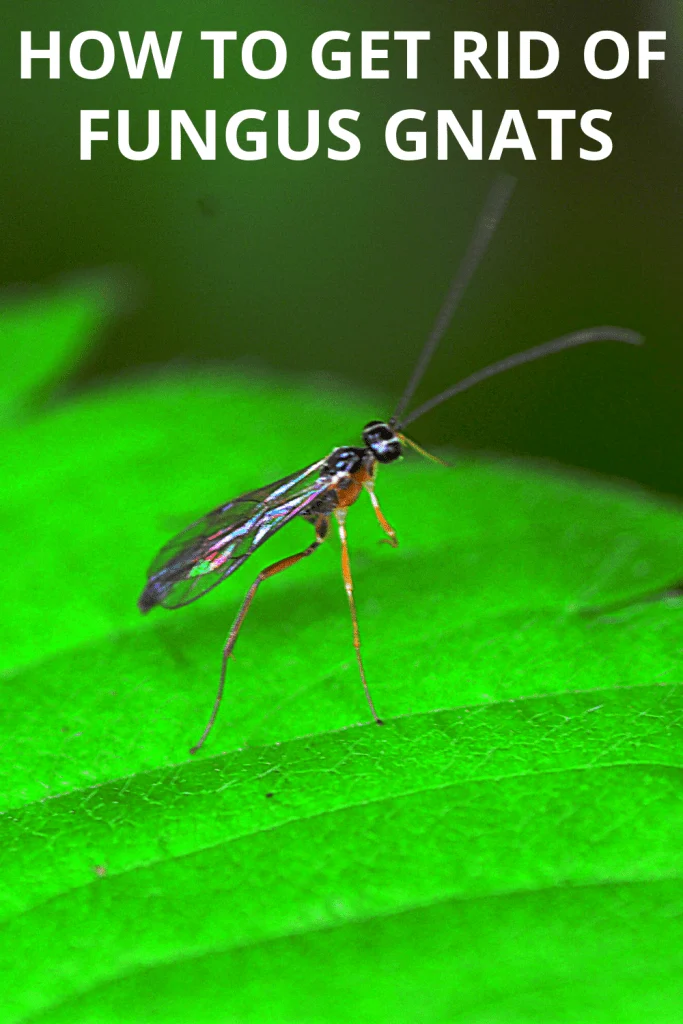
Table of Contents
What are Fungus Gnats?
Fungus gnats are often mistaken for fruit flies. This is due to their fly behavior and the fact that they’re the same size.
They come from several families, including:
- Bolitophilidae
- Diadocidiide
- Ditomyiidae
- Keroplatidae
- Mycetophilidae
- Sciaridae
According to the University of Milwaukee, these families belong to the superfamily Sciaroidea.
Adult fungus gnats are small but not so small you can’t see them. An adult gnat ranges between 1/16th to 1/8th of an inch in length.
The adult is a grayish or blackish color. Their wings are translucent gray. This is why they’re nicknamed “dark wings.”
The gnats have long skinny legs and a long segmented antenna. Their antennas are what distinguish them from other flies and gnats.
Fungus gnat larvae grow between 1/8th and 1/4th of an inch. The larvae have a clear body. They have dark heads. Their heads are small and hard to see.
They live two to three inches beneath the potting soil of a plant (5.0-7.5 cm).
When the larvae change, they change into pupae. Pupae are white, but as they age, they get darker in color.
The pupae stage evolves into the adult gnat stage.
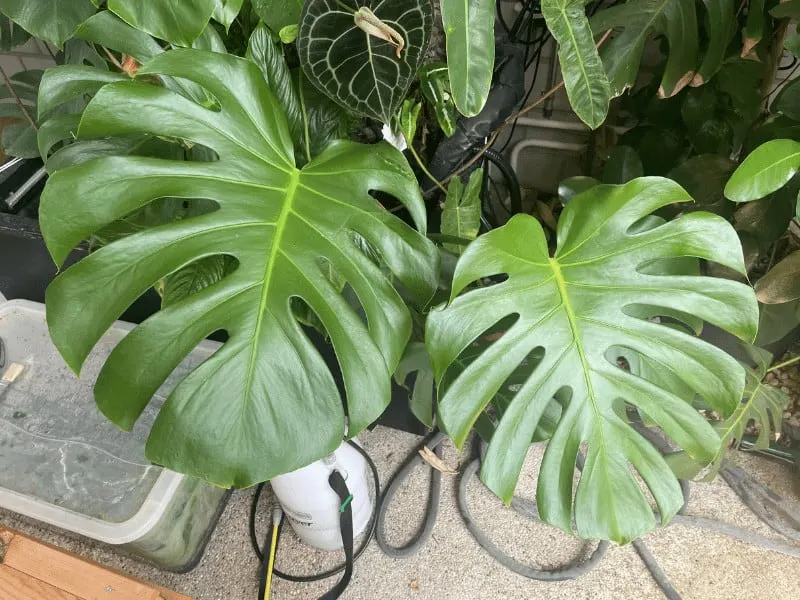
Fungus gnats love moisture and humidity. You find them flying or walking on the soil of your plant. You find the larvae in the soil.
Most fungus gnats can take the cold, unlike many other bugs. This is because the gnats have antifreeze proteins.
Antifreeze proteins are a type of polypeptide. Some animals and bugs have this protein, so they can take freezing weather.
Fungus gnats can’t harm humans. There are no diseases they can pass on to you. There’s nothing they can do to hurt you. Except fly in circles in front of your face and annoy you.
They’re like any other gnat you’ve encountered.
But they can pass diseases onto your indoor plants. And fungus gnat larvae feed on the roots of your plant.
The roots are the most vulnerable area and should be protected at all costs. These pests can be the worst when you’re not expecting them.
It’s also because many people are unaware of fungus gnats and what they can do to indoor plants.
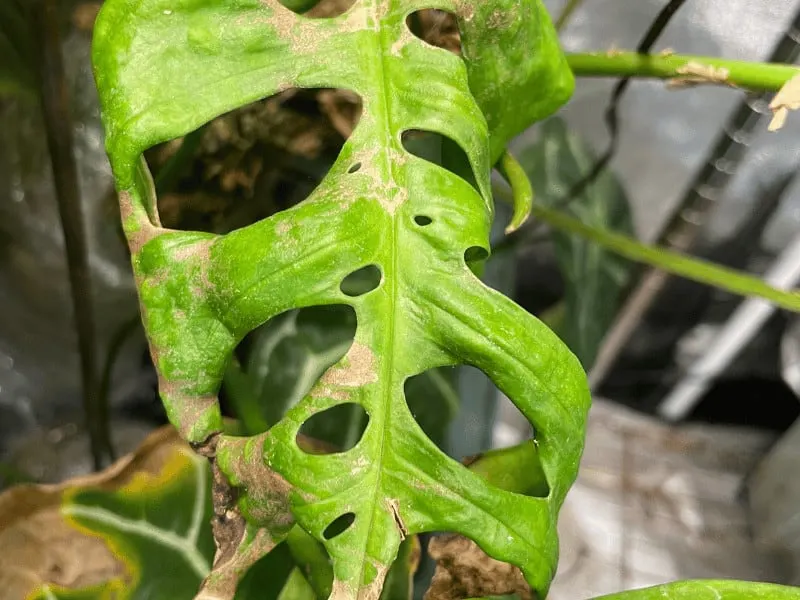
How to Prevent Fungus Gnats
Preventing fungus gnats is possible. They can be hard to eliminate once an infestation gets too large. This is why the best is to avoid getting fungus gnats altogether.
1. Inspect, Treat, and Quarantine all new Houseplants
Always, always check any new plants you bring into your home. Since larvae hide under the potting soil, you’ll have to do more than a quick look over to be sure.
If you’re concerned, you can put your new plant in a different room for two weeks. You can watch the plant to see if any fungus gnats pop up.
2. Have Good Air Circulation
Another way to prevent fungus gnats from infesting your plant is to ensure air is circulating. You especially want circulation around the soil.
You can accomplish this with a blowing fan.
Air circulation keeps the top layer of the soil dry. They’re less likely to come to check out your plant, let alone lay any eggs if it’s dry.
Not to mention, the gnats have a hard time flying when a fan is blowing at them.
3. Do not Overwater your Plants
It’s also important not to over-water your plant since fungus gnats love moisture.
Check the soil before you water your plant. The soil should dry at least two inches deep before you even water it.
4. Buy Pots with Drainage Holes
Ensure your plant’s pot has drainage holes so extra water can escape instead of sitting in the potting soil.
How To Get Rid of Gnats in Houseplants?
1. Detect Fungus Gnats early on
Before you put your plant through treatment, you need to know if what you’re dealing with are fungus gnats.
First, you need to look around your plant for the gnats. These insects aren’t hard to find.
But they’re hard to see so you’ll have to examine your plant closely.
Fungus gnats hang out on the top of the potting soil of a plant.
You’ll also notice the adults flying around the infested plant. But their wings aren’t made to fly for too long. They’re also slow fliers.
Adult fungus gnats tend to fly toward lights. When you have an infestation, you’ll notice hovering around lights or windows in your home.
They won’t stray far from your indoor plants. The gnats don’t like traveling far from their homes because their wings are weak.
If you still aren’t sure if you have fungus gnats, below are other signs to look for.
When many larvae feast on your plant, leaves will turn a bright yellow. The leaves might even have brown or black spots. Then the leaves start to drop.
The growth of your plant will slow way down. The plant might even stop growing altogether.
The worse the roots, the worse the consequences. The plant will start to wilt. This will lead to your plant’s death.
2. Cut a Raw Potato in Half
One way to be sure you’re dealing with fungus gnats is to cut a raw potato in half. Place the halves the cut side down. You should place them on opposite sides at the base of your plant.
The fungus gnat larvae will crawl out of the soil to feed on the potato halves. The next day, turn the potatoes over.
You should see them crawling around. You might have to look closely because the larvae are super small.
3. Use Sticky Tape
Sticky Tape is my favorite way of getting rid of fungus gnats. Fungus gnats are flying insects in their adult stage. The adult gnats stick to the tape and won’t be able to take off again.
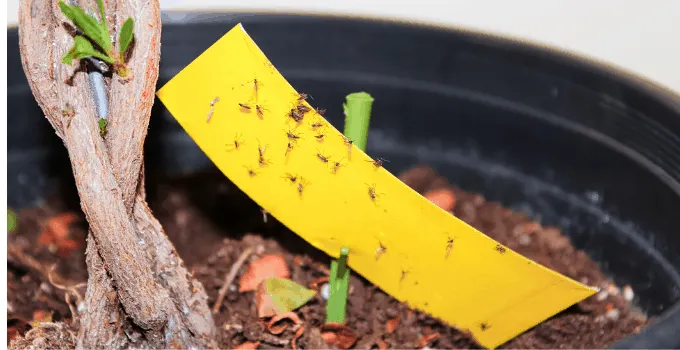
Sticky traps are best for small fungus gnats infestations.
The only issue is this only rids your plant of adult fungus gnats. It doesn’t help you rid your plant of pupae or larvae.
You’re going to place the yellow sticky traps in a horizontal line on the soil’s surface.
The color yellow attracts fungus gnats. When they see the sticky traps, they will head right for them.
Of course, the sticky surface traps these pests.
All you have to do is discard the yellow sticky traps. You’ll want to take the trash outside right away.
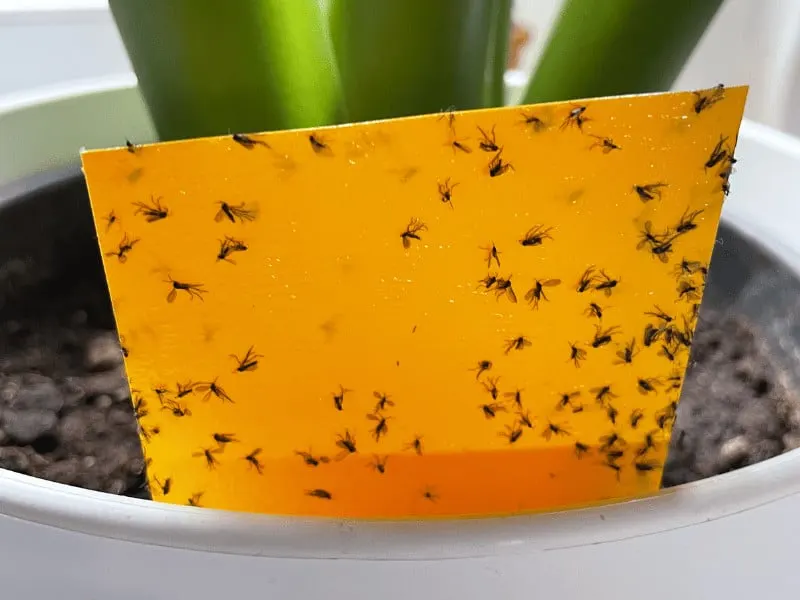
4. Let the Potting Soil Dry Out
Letting the potting soil dry down to two inches (5 cm). This takes all the moisture that the larvae love so much.
There are several benefits to this method.
First, the dry soil kills the bugs.
Second, it stops fungus gnats from laying eggs and kills any eggs already under the soil’s surface.
You’ll have to find a way to treat your plant for the adult gnats.
5. Use Flypaper to Eliminate Gnats
You can try hanging flypaper above your plant to get rid of adult gnats. But make sure you hang the flypaper high enough from your plant that it doesn’t get stuck.
At the same time, you don’t want the flypaper too high above the plant since fungus gnats are weak fliers.
6. Make Use of Neem Oil
Neem oil is perfect for small infestations of fungus gnats. It’s an all-natural pesticide that won’t hurt you or your plant.
Spray the neem oil on the top of the potting soil. Make sure you drench it. You should also spray anywhere you see the adult gnats flying.
There are strange effects when the larvae feed off soil that’s absorbed neem oil. This includes the lack of wanting to eat or mate. So, they die.
The oil will smother the adult gnats you spray. The oil is so thick it covers the gnat’s pores.
Neem oil also works as a great bug repellent.
7. Create a Cider Vinegar Mix to Get rid of a Large Infestation
So, your fungus gnat infestation has grown large. It’s not uncommon for this to happen.
There are many cases when people don’t realize there’s a problem until their plant looks sick.
The problem with treating an infestation is that treatments only rid you of the adults or the larvae. Never both.
So, remember that you’ll have to do a combination of treatments to thoroughly treat your plant.
The first method to rid your plant of fungus gnats also works well for fleas. Gnats fly right into this concoction and fleas jump right in.
But it only works for adult fungus gnats.
You’ll need:
- 1 cup of cider vinegar
- 1 teaspoon of mild liquid dish detergent
- 1 cup of water
- 1/4 inch deep shallow plastic container
In the shallow plastic container, mix the cider vinegar and water. Add the mild liquid dish detergent. You mix everything at this point.
Place the plastic container at the base of your plant, on the potting soil. Within the first day, you’ll see a few gnats stuck in the mixture.
You must change the container with new ingredients every three days at least.
8. Make Use of Beneficial Nematodes
Beneficial nematodes according to the US States Department of Agriculture are roundworms. They are not true worms but are microscopic worm-like bugs. They’re perfect for fungus gnat control.
They’re easy to find. You can get nematodes online or even at some garden stores.
Don’t panic. They’re not the same roundworm that infests humans or pets.
These nematodes are natural enemies with fungus gnat larvae. You’ll be putting nature to work when you try this method out.
Nematodes can kill larvae in one of two ways.
The first way is by penetrating the larvae. The nematode enters the larvae through their mouths or pores. This alone can make the larvae sick.
The second way is by the nematodes releasing bacteria while inside the larvae. These specific bacteria eat the larvae from the inside out.
Once this happens, the larvae have three to five days to live.
Nematodes work best between 60F to 90F.
9. Make use of Insecticidal Soap
Insecticidal soap is another great way to rid your plant of large infestations.
The soap is made from fatty acids. The fatty acids can cut through the gnat’s exoskeleton.
Once it’s through the exoskeleton, the acids dehydrate the gnat, and its cells collapse.
We have a soap recipe that will get those fungus gnats out of your plant’s potting soil.
You’ll need:
- 1 tablespoon of pure liquid soap (you can substitute with mild dish detergent)
- 1 quart of water
- Spray bottle
Making the soap is simple, saving you from buying an expensive version of the same thing.
Start by adding the water and pure liquid soap to the spray bottle. Shake it all together. If the pure soap is too thick, you’ll need to use a utensil to mix it.
Drench the potting soil of your plant with insecticidal soap. The soap will do the rest by seeping into the soil where the larvae lay.
You need to repeat this process every other day for about three weeks. This ensures that you get all the larvae that you didn’t get in the first round.
You don’t want the females to lay more eggs in your already-treated soil.
Now, this is only going to kill the fungus gnat larvae. You still need to take care of the adult gnats.
You’ll need a spray bottle for this next treatment too. You fill the spray bottle with only 3% hydrogen peroxide.
Only use 3% hydrogen peroxide. A stronger version can burn your plant since it’s a bleaching agent.
Mix 3% hydrogen peroxide and water in equal parts to dilute it.
The first thing you need to do before applying hydrogen peroxide is to let the soil dry out for a few days.
Then all you have to do is spray and drench the potting soil with hydrogen peroxide.
It won’t take long before you see the soil foam. This is how you know it’s working and killing the larvae on contact.
You’ll need to repeat this process once a week for three weeks or longer.
You might have to turn to chemical pest killers when all else fails. Before you use these chemicals, test a small area to ensure no adverse effects.
FAQ
Why are they named “fungus gnats”?
They’re named fungus gnats because these bugs are carriers of mushroom spores. They come in contact with these spores because they’re attracted to fungi. When they land, their feet can (not always) spread the spores to your plant.
Why do the fungus gnats from my plant keep flying at me?
Fungus gnats are a nuisance when it comes to flying at humans. There’s something about us they like. If you wear perfume or cologne, they love you.
Do fungus gnats bite?
No, fungus gnats don’t bite. They’re harmless to humans and pets.
Conclusion
Fungus gnats are a nuisance, and larvae can be deadly. And the longer you let them go, the more they’ll multiply.
Once the infestation has grown, you must work harder to eliminate these pests. This is why how to get rid of gnats needs to be your top priority once you spot fungus gnats.

